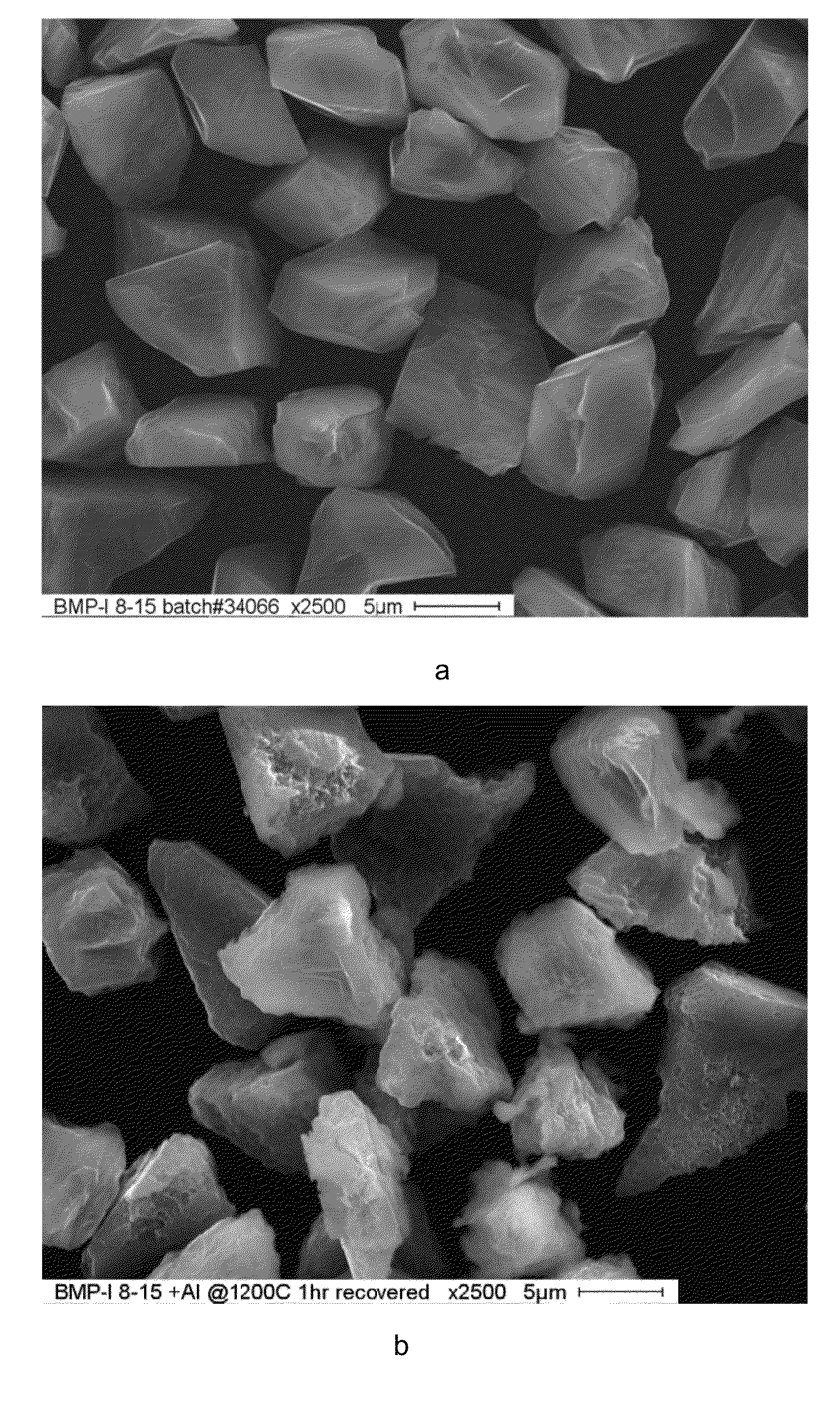Cubic boron nitride particles having a unique morphology
- Summary
- Abstract
- Description
- Claims
- Application Information
AI Technical Summary
Benefits of technology
Problems solved by technology
Method used
Image
Examples
example i
[0061]A 8-15 μm monocrystalline CBN powder with a mean size of 12 μm was blended with an aluminum powder with a mean size of 3 μm using a blend ratio of 40 weight percent CBN particles and 60 weight percent aluminum powder (no binder). The blend was compacted into a 2 cm×0.5 cm pellet using a Carver® press at a pressure of 20,000 psi. The pellet was heated at 1200° C. for 1 hour in forming gas atmosphere. The CBN pellet was allowed to cool. The CBN particles were recovered from the pellet by digesting in an acid mixture of 4:3:1, H2O:HCl:HNO3 until the pellet dissolved and the liberated particles settled to the bottom of the beaker. The CBN particles were neutralized with deionized water, recovered and dried. X-Ray diffraction analysis was performed on the powder and is shown in FIG. 1. These results show that some residual aluminum nitride is present in the powder confirming that a chemical reaction did occur. Samples of the recovered CBN were placed into a scanning electron micros...
example ii
[0062]A 2-4 μm monocrystalline CBN powder with a mean size of 3 μm was blended with an aluminum powder with a mean size of 3 μm using a blend ratio of 40 weight percent CBN particles and 60 weight percent aluminum powder (no binder). The blend was compacted into a 2 cm×0.5 cm pellet using a Carver press at a pressure of 20,000 psi. The pellet was heated at 1200° C. for 1 hour in forming gas atmosphere. The CBN pellet was allowed to cool. The CBN particles were recovered from the pellet by digesting in an acid mixture of 4:3:1, H2O:HCl:HNO3 until the pellet dissolved and the liberated particles were settled to the bottom of the beaker. The CBN particles were neutralized with deionized water, recovered and dried. Samples of the recovered CBN were placed into a scanning electron microscope and photos were taken for these particles. FIG. 3(b) shows these particles and clearly shows evidence of significant surface etching. The unmodified 2-4 μm CBN particles are shown in the same FIG. 3(...
PUM
 Login to View More
Login to View More Abstract
Description
Claims
Application Information
 Login to View More
Login to View More - R&D Engineer
- R&D Manager
- IP Professional
- Industry Leading Data Capabilities
- Powerful AI technology
- Patent DNA Extraction
Browse by: Latest US Patents, China's latest patents, Technical Efficacy Thesaurus, Application Domain, Technology Topic, Popular Technical Reports.
© 2024 PatSnap. All rights reserved.Legal|Privacy policy|Modern Slavery Act Transparency Statement|Sitemap|About US| Contact US: help@patsnap.com










